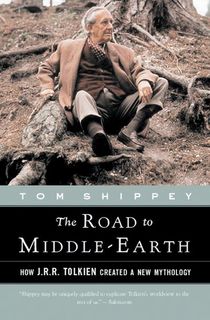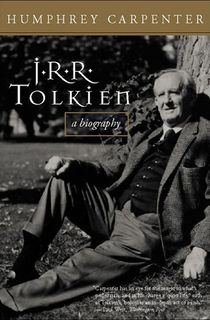Since his death in 1973 at the age of 81, the influence of John Ronald Reuel Tolkien—more often known as J.R.R. Tolkien—has only continued to grow. A philologist, professor, and writer, Tolkien devoted much of his life to his 'legendarium,' the word he used to refer to his body of work set in Middle-earth and its surrounding areas. Tolkien spent more than 50 years writing the poems and fiction of his legendarium; the result is an expansive and incredibly influential body of work.
Below are 15 facts about the man behind Middle-earth: a devoted romantic, a delightful father, a practical jokester, and an incredible storyteller.
He wasn’t born in England
Although Tolkien is a beloved British icon, the influential author was actually born in South Africa. John Ronald Reuel Tolkien moved to England with his mother and brother in 1895.
RELATED: The Must-Watch Interview for George R.R. Martin & Stephen King Fans
He was an orphan by the time he was 12
Tolkien’s father Arthur Reuel Tolkien passed away of rheumatic fever when Tolkien was three years old, while Tolkien and his mother and brother were in England for what was initially intended to only be an extended visit. The family remained in England after Arthur's death. Tolkien’s mother, Mabel Tolkien, passed away from acute diabetes in 1937.
RELATED: First Trailer for Tolkien Biopic
He was raised by a priest
Before she died, Mabel ensured that her close personal friend Father Francis Morgan would care for John Ronald and his younger brother, Hilary Arthur Reuel Tolkien.
He met the love of his life at an early age
When Tolkien was just 16, he fell for another orphan, Edith Bratt. Bratt was three years his senior, but the pair quickly bonded. In J.R.R. Tolkien: A Biography, Carpenter explains how the young lovers passed their time: “Edith and Ronald took to frequenting Birmingham teashops, especially one which had a balcony overlooking the pavement. There they would sit and throw sugarlumps into the hats of passers-by, moving to the next table when the sugar bowl was empty.”
But Father Francis Morgan disapproved of Tolkien dating a woman three years his senior, particularly a Protestant. The 16-year-old deferred to his guardian, and separated from Edith. But when Tolkien turned 21, he came for her.
RELATED: 9 Action-Packed Sword & Sorcery Fantasy Books
On the night of his 21st birthday, Tolkien sent Edith a letter expressing his enduring love, despite the fact that she was engaged to another man. The two met to talk things over, and by the end of the day, Edith had called off her engagement. She converted to Catholicism, and the two were married.
They were together for 50 years, until Edith passed away in 1971. Tolkien himself died 21 months later. Their tombstone is engraved with the names ‘Beren’ and ‘Luthien’, a reference to two lovers in Middle-earth lore.

A trip to Switzerland inspired Frodo’s journey
When he was 19, Tolkien and a group of 12 friends traveled around Interlaken and Lauterbrunnen in Switzerland. Decades later, Tolkien wrote in a letter to his son Michael, “From Rivendell to the other side of the Misty Mountains, the journey ... including the glissade down the slithering stones into the pine woods ... is based on my adventures in Switzerland in 1911.”
He was at the Battle of the Somme
Tolkien enlisted in late 1915, after graduating from Oxford. The 21-year-old thought his chances of surviving unlikely. Of his final night with Edith before he left for the front, he wrote "Junior officers were being killed off, a dozen a minute. Parting from my wife then ... it was like a death."
While at the front, Tolkien developed a secret code that he used in his letters to alert Edith to where he was. During the Battle of the Somme, Edith was certain she would hear that her new husband had been killed. But on November 8, 1916, Tolkien was sent back to England due to a debilitating fever he'd contracted from lice. His illness likely saved his life. The author later said that all but one of his dearest friends from school was killed in the war.
RELATED: 15 Fascinating Facts About Sci-Fi Pioneer Mary Shelley
He and Chronicles of Narnia author C.S. Lewis were close friends
In 1926, Tolkien, who had begun a coveted professorship at Oxford in 1925, met fellow professor C.S. Lewis. The two professors connected over a shared love of Norse mythology. After knowing each other for several years, both became involved with an unofficial but now legendary literary society at Oxford known as The Inklings. The Inklings was a group of aspiring writers, all of whom were white Christian men.
The group met frequently at the local club The Eagle and Child (which they called the Bird and the Babe), where they read aloud from their work and offered each other critique. Tolkien read his work in progress, The Lord of the Rings, to the Inklings. Lewis’ works Out of the Silent Planet and Perelandra were also developed during this time.

The Oxford pub The Inklings met at, which is still operational today.
Photo Credit: Wikimedia CommonsThe Inklings may have had a considerable impact on the course of Tolkien's iconic work. According to T.A. Shippey in J.R.R. Tolkien: Author of the Century, “It was a criticism of Tolkien’s early drafts of Book I made by both Rayner Unwin and C.S. Lewis that Tolkien found it too easy, and too amusing, just to let the hobbits chatter on. Tolkien did his best to amend this."
Humphrey Carpenter in J.R.R. Tolkien: The Biography writes that Treebeard the Ent in Lord of the Rings was even based somewhat on Lewis' characteristics.
He once went to a party dressed as a polar bear, and sometimes paid shopkeepers in false teeth
According to Carpenter’s biography of Tolkien, the professor wasn't afraid to make an entrance. In the 1930s, he apparently attended a non-costume party dressed as a polar bear. Carpenter also writes that Tolkien occasionally dressed as an Anglo-Saxon warrior to chase his next-door neighbor, and that "later in life he delighted to offer inattentive shopkeepers his false teeth among a handful of change."
He was an exceptionally bad driver
Tolkien purchased his first car in 1932, but didn’t take easily to this new mode of transportation. According to J.R.R. Tolkien: A Biography, he once managed to destroy a stone wall near Chipping Norton during a road trip. When crossing a busy intersection, he would typically ignore other cars, shouting “Charge ‘em and they scatter!” as he bowled through. He eventually stopped driving due to concerns about the environmental impact of cars.
Some of the characters in Lord of the Rings were inspired by dolls
Edith and Tolkien had four children to whom Tolkien was very devoted. The character of Tom Bombadil was inspired by one of his son Michael's Dutch dolls.
He considered language to be the most important part of Middle-earth
As a philologist, Tolkien was exceptionally passionate about language. His Middle-earth stories were initially created as a means for him to further explore the languages he had created. In his own words, "The invention of languages is the foundation. The ‘stories’ were made rather to provide a world for the languages than the reverse.”
He trained as a World War II code breaker
Prior to World War II, Tolkien trained with the Government Code and Cypher School to become a Nazi code breaker. However, he ultimately declined a £500-a-year offer to be a full-time recruit.
He nearly refused to publish a German-language edition of The Hobbit
In 1938, Tolkien and his publisher were negotiating with publishing house Rütten & Loening to release a German-language edition of The Hobbit. When Rütten & Loening asked for confirmation of Tolkien's Aryan heritage, he told his publisher "let a German translation go hang [...] I do not regard the (probable) absence of all Jewish blood as necessarily honourable; and I have many Jewish friends, and should regret giving any colour to the notion that I subscribed to the wholly pernicious and unscientific race-doctrine."
Tolkien drafted two letters to be sent to Rütten & Loening. It's not known which one his publisher ultimately sent, but in one of them Tolkien wrote,
I have been accustomed, nonetheless, to regard my German name with pride, and continued to do so throughout the period of the late regrettable war, in which I served in the English army. I cannot, however, forbear to comment that if impertinent and irrelevant inquiries of this sort are to become the rule in matters of literature, then the time is not far distant when a German name will no longer be a source of pride.
He didn't want the Beatles to star in a Lord of the Rings adaptation

The fellowship of the fringe.
Photo Credit: Wikimedia CommonsIn 1969, The Beatles were in talks to star in an adaptation of The Lord of the Rings, with Stanley Kubrick directing. According to Variety, John, Paul, George and Ringo would play Gollum, Frodo, Gandalf and Sam, respectively. However, Tolkien turned them down.
RELATED: Sci-Fi Legend Samuel R. Delany Doesn't Play Favorites
He may have had a personal grudge against The Beatles ...
One possible reason Tolkien objected to the fab four embodying the fellowship may have been that they reminded him of his very noisy neighbors. In 1953, Tolkien and Edith moved to Oxford’s Sandfield Road due to a doctor's ultimatum saying Edith required peace and quiet. Unfortunately, as Tolkien wrote in a 1964 letter, some musicians aspiring to be the next Beatles moved in, and there went the neighborhood: "In a house three doors away dwells a member of a group of young men who are evidently aiming to turn themselves into a Beatle Group. On days when it falls to his turn to have a practice session the noise is indescribable.”
[Via Listverse; FirstThings; Kill Adjectives; The Telegraph; io9; Wikipedia]
An earlier version of this article incorrectly stated the name of Tolkien's father. The Portalist regrets the error.



